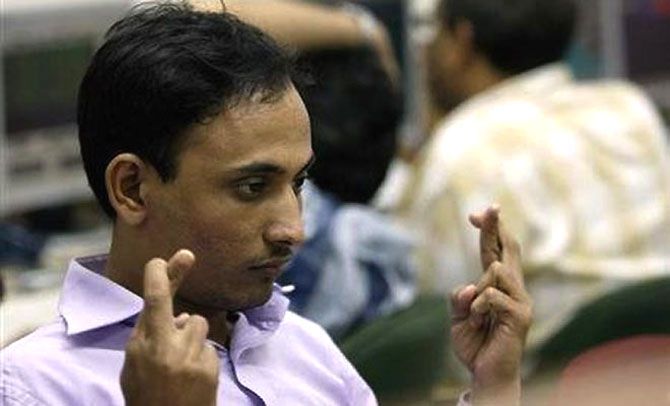 | « Back to article | Print this article |
New series points to a sharp recovery since FY14, despite falling tax mop-up.
 Goldman Sachs had forecast in December that India’s gross domestic product (GDP) growth would outpace China’s by FY17-18.
Goldman Sachs had forecast in December that India’s gross domestic product (GDP) growth would outpace China’s by FY17-18.
However, the Indian government has managed the feat this year. Under the new GDP series, the economy expanded 7.5 per cent in the December quarter.
Not only this, GDP growth in FY15 is expected to be 7.4 per cent.
With China expected to grow close to seven per cent in 2015 and below that by 2016, India has become the fastest growing economy in the world.
Under the new series, the economy bottomed out in FY13 when it grew by 5.1 per cent. But it bounced back in FY14.
Interestingly, this rapid recovery is despite a contraction in savings, investment and tax collections.
Growth in FY15 would have been close to eight per cent were it not for the weak monsoon, which dragged GDP down in the third quarter.
In the September 2014 quarter, the economy expanded 8.2 per cent over a year. This feat has left many experts flummoxed.
HSBC Global Research says the pace at which the economy has been growing in the past several quarters and the pace at which it has slowed are much higher than in the old series and will take time to assess.
Anubhuti Sahay and Samiran Chakraborty of Standard Chartered Global Research believe the strong results need to be interpreted with caution, as activity indicators and sentiment surveys underline significant slack in the economy.
There are two other factors that must be kept in mind. First, with this kind of a growth trajectory, India has isolated itself from the rest of the world.
Second, the new GDP series are showing sharply higher growth rates primarily because of a drop in inflation and under-estimation of the efficiency of capital employed.
Dhananjay Sinha of Emkay Global says the primary factor for sharp upward revisions in GDP growth has been the better capital efficiency, measured by Incremental capital-output ratio (ICOR), which measures the unit of capital required to generate a unit of output.
This ratio, which changed from eight in FY13 to 5.2 last year, is estimated to have improved further to 4.8 this year. The lower the ICOR, the more efficient is the utilisation of capital and, therefore, higher growth.
If the economy is firing on all cylinders and recovery has been underway, then tax collections should also be growing in India.
India’s gross tax revenue growth has fallen to 9.2 per cent in the first nine months of FY15, from seven per cent a year ago.
In FY13, gross tax revenue grew at 15 per cent. This economic recovery is not accompanied by corporate earnings growth.